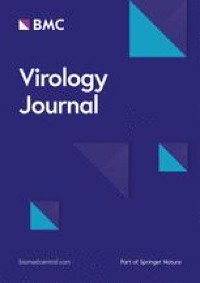
In the absence of an alternative explanation for the neurological symptoms, this case supports that LCMV infection via percutaneous injection can cause neurological symptoms in an LCMV naïve individual. It also demonstrates that seroconversion can take more than one month and can occur once all the symptoms have dissipated. We recommend testing for seroconversion at days 30 and 60 post-exposure to confirm the infection status of the individual.
Of interest, the Armstrong strain of LCMV, as well as the Clone-13 variant, is considered as risk group 2 pathogens by the Public Health Agency of Canada (https://health.canada.ca/en/epathogen). In this specific case, the infection occurred in a containment level 2 animal facility, where the standard operating procedures include the use of a second pair of gloves and protective sleeves, as well as clear written procedures regarding the handling of mice on the biosafety cabinets. As the symptoms associated with LCMV infection in humans are relatively mild in immunocompetent individuals (Fig. 1) [2, 14, 15], we argue that the containment level 2 is adequate for performing experiments with the Armstrong strain of LCMV. Moreover, as the risk of self-injection is still present in a containment level 3 facility, the classification of LCMV Armstrong as a level 3 pathogen would not significantly reduce the risk of infection for laboratory workers.
Of note, this case differs from natural infections with LCMV, both in terms of dose and route of administration. The solution prepared for injecting mice contained 2 × 105 plaque-forming units (PFU) per milliliter of LCMV Armstrong and exposure was through a percutaneous wound. Although it is difficult to determine precisely, typical needle-stick injuries can inject between 0.3 µL and 6 µL of volume depending on the gauge and depth of needle exposure [16]. Extrapolating this information to this case leads to an infectious dose of LCMV between 60 and 1200 PFU. The higher viral titer in the inoculum, as well as the percutaneous route of exposure, likely explains the severity of the symptoms. Of interest, in contrast to natural exposure via the respiratory tract, the acute response in this patient was not followed by a second wave of aggravated symptoms.
LCMV is an endemic virus throughout all temperate regions of the world. It is estimated that ~ 10% of wild mice are infected with LCMV, although this number may be higher in some settings [17, 18]. One study reported that approximately 5% of the human population carries antibodies against LCMV [2], but the number of people that have been exposed is likely significantly higher. Studies from the 1960s showed that LCMV was one of the most common causes of aseptic meningitis [19], although the proportion of LCMV meningitis reports has recently declined. This latter point is emphasized by the fact that the NML, which is responsible for all LCMV diagnostics in Canada, only runs ~ 50–60 tests for LCMV per year and only 5 positive cases were found over the last 16 years.
In previous case reports and epidemiological studies of laboratory personnel, LCMV infections were related to the Clone-13 variant or to an unknown strain [14, 15, 20,21,22,23]. Common symptoms included fever, severe headaches, flu-like symptoms, vomiting, and, in one case, meningitis [14, 15, 20, 21]. More recently, two cases of LCMV Clone-13 infection through a percutaneous route were reported [7, 8]. The two patients developed neck pain, photophobia, nausea, vomiting, flu-like symptoms, pain in the limbs, and fever [7, 8]. This highlights obvious clinical similarities between LCMV Armstrong and LCMV Clone-13 percutaneous infections, with a possible difference in symptom intensity that could be due to differences in viral doses administered or strain type.
The case presented here is unique given the percutaneous route of exposure and the serological evidence of a primary infection. The previous history of cerebral venous sinus thrombosis makes the differential diagnosis of the patient’s original presentation a little broader, although the absence of neurological symptoms in the years preceding LCMV exposure suggests that a contribution from previous brain lesions is unlikely. Symptoms in a seroconverted individual will likely differ from the symptoms reported here, both in severity and duration. This hypothesis should be confirmed in future reports. This case report offers a framework to investigate and follow patients exposed to LCMV Armstrong, filling a gap in our understanding of LCMV as an endemic pathogen and as a laboratory hazard.
https://news.google.com/rss/articles/CBMiR2h0dHBzOi8vdmlyb2xvZ3lqLmJpb21lZGNlbnRyYWwuY29tL2FydGljbGVzLzEwLjExODYvczEyOTg1LTAyMy0wMjI1OC140gEA?oc=5
2023-12-12 15:03:31Z
CBMiR2h0dHBzOi8vdmlyb2xvZ3lqLmJpb21lZGNlbnRyYWwuY29tL2FydGljbGVzLzEwLjExODYvczEyOTg1LTAyMy0wMjI1OC140gEA
Bagikan Berita Ini














0 Response to "Armstrong strain lymphocytic choriomeningitis virus infection after accidental laboratory exposure - Virology Journal - Virology Journal"
Post a Comment